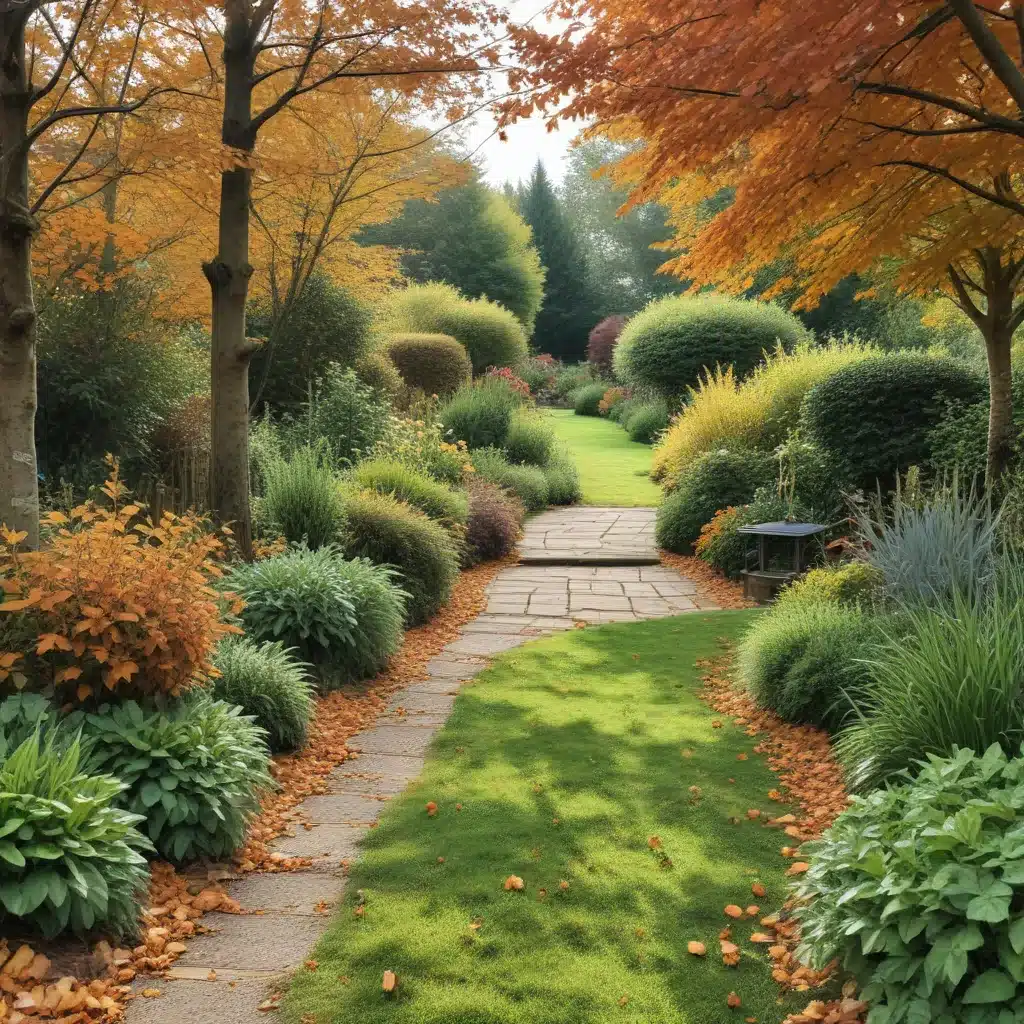
As the leaves change color and the days grow shorter, it’s time to start preparing your garden for the cooler months ahead. Embracing the changing seasons can be a daunting task, but with the right knowledge and preparation, you can create a beautiful oasis that will last through the winter.
Seasonal Transitions
The key is to determine the average first frost date in your area, as this will dictate the best time to start planting for winter. For example, if your region has an average first frost date of November 1st, you should begin planting by mid-September. Some of the most popular winter crops are garlic, beets, broccoli, kale, cabbage, carrots, Brussels sprouts, and spinach. Depending on your climate, you may also be able to grow onions, potatoes, and leeks. Additionally, pansies, violas, and snapdragons are winter-hardy flowers that can add a splash of color.
Before planting, ensure the soil is ready and the temperatures are suitable for the plants you wish to grow. Compost is one of the best soil amendments for winter plantings, as it adds organic matter to improve structure, drainage, and nutrient levels. Aerating the soil with a garden fork or tiller is also crucial to encourage deep root growth.
Garden Preparation
Pests can be problematic in winter gardens, so use a combination of physical and chemical control methods. Manually remove pests like aphids and caterpillars, and consider using insecticides or other sprays to deter them. Keep the garden clean and free of debris, as this can attract unwanted visitors.
Pruning is important to help plants conserve energy and focus on root growth. Perform this task in late summer or early fall, cutting away dead or diseased branches. Additionally, winterize your plants by covering them with frost cloths or other protective materials to shield them from the cold.
As the seasons change, it’s essential to remove weeds, dead plants, and diseased foliage to give your garden room to breathe and reduce the risk of pests and diseases. Add a layer of mulch around your plants to insulate them, retain moisture, and discourage weed growth. Fertilize your garden to replenish any depleted nutrients, and ensure your plants are well-hydrated by watering them deeply and consistently throughout the fall and winter months.
Shifting Ecosystems
Embracing the changing seasons in your garden can be a rewarding experience. By following the tips and guidelines outlined in this article, you can ensure your garden remains vibrant and healthy even as the temperatures drop. From preparing your plants for the cold to adding seasonal charm with winter-friendly blooms, your garden can become a source of beauty and tranquility throughout the colder months.
Gardening Essentials
Soil Maintenance
Soil preparation is one of the most important steps in winter gardening. Begin by checking the soil’s pH and nutrient levels, making any necessary adjustments. Use a garden fork or tiller to loosen the soil and improve aeration, then incorporate compost or other organic matter to enrich the growing medium.
Plant Selection
When it comes to winter plantings, choose a diverse array of crops and flowers that will provide a continuous display of color and texture. In addition to the winter-hardy vegetables mentioned earlier, consider incorporating ornamental kale, pansies, and violas for a pop of vibrancy. Remember to select plants suited to your climate and growing conditions.
Watering Strategies
Proper watering is crucial during the cooler months, as plants may need less frequent irrigation but deeper soakings to reach their roots. Monitor soil moisture levels and adjust your watering schedule accordingly. Avoid getting foliage wet, as this can lead to fungal diseases.
Landscape Transformation
Foliage Changes
As the leaves turn brilliant shades of red, orange, and yellow, the garden takes on a new, vibrant personality. Sugar maples, red maples, oaks, hickories, ashes, birches, sweetgums, dogwoods, and sassafras are just a few of the trees that add rich autumn hues to the landscape.
Ornamental Additions
Enhance your garden’s autumn appeal by incorporating seasonal ornaments and decor. Pumpkins, gourds, and corn stalks can be artfully arranged to create striking displays. Consider adding a scarecrow or hay bale for a touch of country charm.
Wildlife Adaptations
As the weather cools, your garden becomes a haven for various creatures preparing for winter. Fallen leaves provide valuable habitat and insulation for beneficial insects, amphibians, and small mammals. By leaving the leaves in place, you’re supporting the local ecosystem and enriching the soil as they decompose.
Harvesting Bounty
Vegetable Yields
Your winter garden can be a bountiful source of fresh produce. Enjoy the fruits (or vegetables) of your labor by harvesting Brussels sprouts, kale, carrots, beets, and other cool-weather crops. Consider preserving your harvest through canning, freezing, or dehydrating to extend their shelf life.
Fruit Cultivation
If you’re lucky enough to have fruit trees or berry bushes, autumn is the time to reap their rewards. Gather apples, pears, grapes, raspberries, and blackberries to savor fresh or incorporate into jams, pies, and other delectable treats.
Preserving Produce
Take advantage of the autumn harvest by preserving your garden’s bounty. Canning, freezing, and dehydrating are excellent methods for extending the life of your fruits and vegetables. Explore recipes for canned tomatoes, frozen berries, and dried herbs to enjoy the flavors of your garden all year round.
As you prepare your garden for the changing seasons, remember to embrace the natural rhythms of nature. By taking the time to care for your outdoor oasis, you’ll be rewarded with a vibrant, healthy landscape that will continue to thrive long after the last leaf has fallen. For more seasonal gardening tips and inspiration, be sure to visit Crooked Pines Farm.


